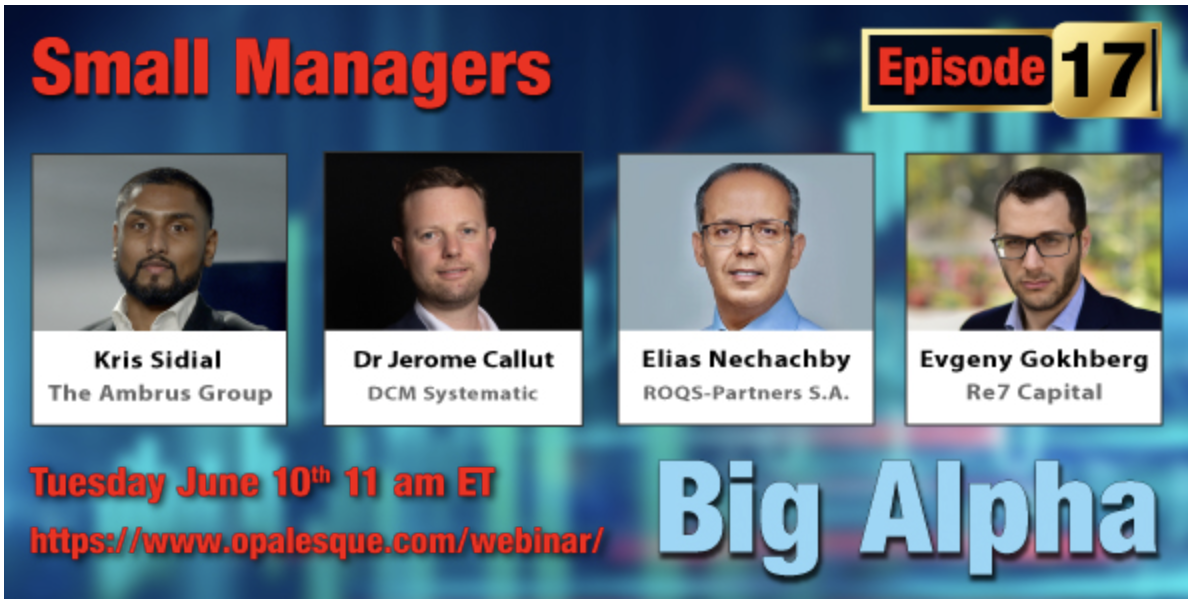|

By Opalesque Geneva for New Managers: Tail risk is the chance of a loss occurring due to a rare event, as predicted by a probability distribution. Hedging is a solution to protect a portfolio against tail risk. But this kind of hedging is constant and draining. While it may enhance returns over the long term, the short-term costs of regular hedging (by, for example, buying derivatives negatively correlated to the portfolio's investments) lead to "bleeding".
Ambrus Group knows how to circumvent this unfortunate condition. The fund manager, based in Hauppauge, New York, specialises in cheap tail-risk hedging by applying prop-style, carry-neutral tail risk hedging, instead of the costly hedge fund method, which is more solutions-based and typically involves purchasing tail options indiscriminately.
The practice of carry-neutral tail risk hedging is far from new, they say. For years, this approach has been a staple for traders in the proprietary derivatives trading space employed by firms such as Peak, CTC, Group One, Gelber Group, and others.
Ambrus's carry-neutral tail risk strategy is meant to achieve significant returns during market crashes. During flat and upward markets, the strategy avoids "bleeding" thanks to uncorrelated proprietary strategies that aim to offset such losses.
Protection against market crashes makes a lot of sense, the managers say, as indeed they are more frequent than investors realise. For example, the S&P has dropped 20%+ in a 30-day period five times since 2000, i.e. an average of once every four to five years. Furthermore, the recent growth in the derivatives markets has increased the probability of cascading market crashes.
Launched in January 2020 - as was the firm - the Ambrus Volatility Fund returned 25% in April.
"Ambrus is a carry-neutral tail risk strategy, so we're always positioned to benefit from dislocations - but without the bleed in calm markets that burdens traditional tail risk funds," co-CIO William Wise tells Opalesque. "Our strong returns this year have come from well-timed monetization during the April volatility spike. A core strength of our approach is not just being long convexity, but knowing how and when to monetize it. That discipline has allowed us to lock in gains during temporary volatility surges."
Wise has been a highly successful independent trader for more than a decade, with expertise in trading short term market inefficiencies. The other co-chief investment officer, Kris Sidial, is a seasoned derivatives trader with experience in the volatility space, who has allocated 60% of his liquid net worth to Ambrus funds. Sidial will present at the Small Managers - Big Alpha Episode 17 interactive webinar on June 10th (details below).
Current volatility regime
The current market environment is defined in part by high volatility and dispersion across asset classes. It offers is a fertile ground for the tail risk strategy, and strategies that prosper in non-linear, fragmented markets.
"We believe we've entered a structurally more active volatility environment," Wise says. "The 'status quo' across markets is being challenged - and as a result, we think volatility will be lively and more responsive to administration inputs. It's a great setup for a strategy like ours, which thrives on disorder but doesn't pay a cost while waiting for it."
The recent tariff-related volatility caused the Cboe Volatility Index (Vix) to spike from 21 to 57 in early April 2025, before calming down again (it rose to 79 in October 2008 and 65 in March 2020). The newly-launched HFRI Long Volatility Index, which includes long volatility and tail risk strategies, surged an estimated 1.6% in April.
Related article:
May 2024: Tail-risk hedging without the bleed
Upcoming Webinar:
Episode 17 of this ground breaking webinar series presents you another carefully screened panel of investment managers. In one hour, you will meet them all, get to know their top quartile strategies, and - since this an interactive session - you will be able to ask your questions.
Free registration: www.opalesque.com/webinar/

Icon by Flaticon
|